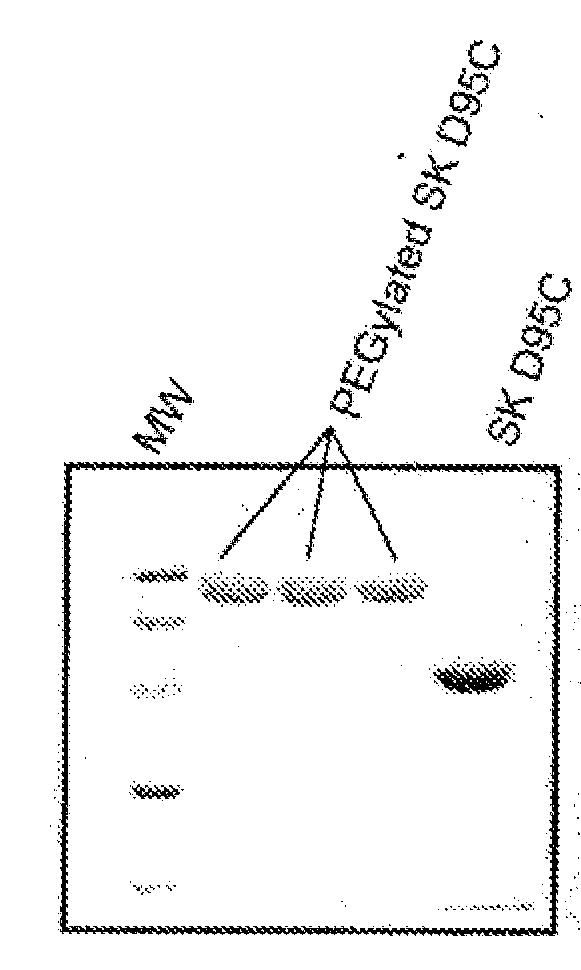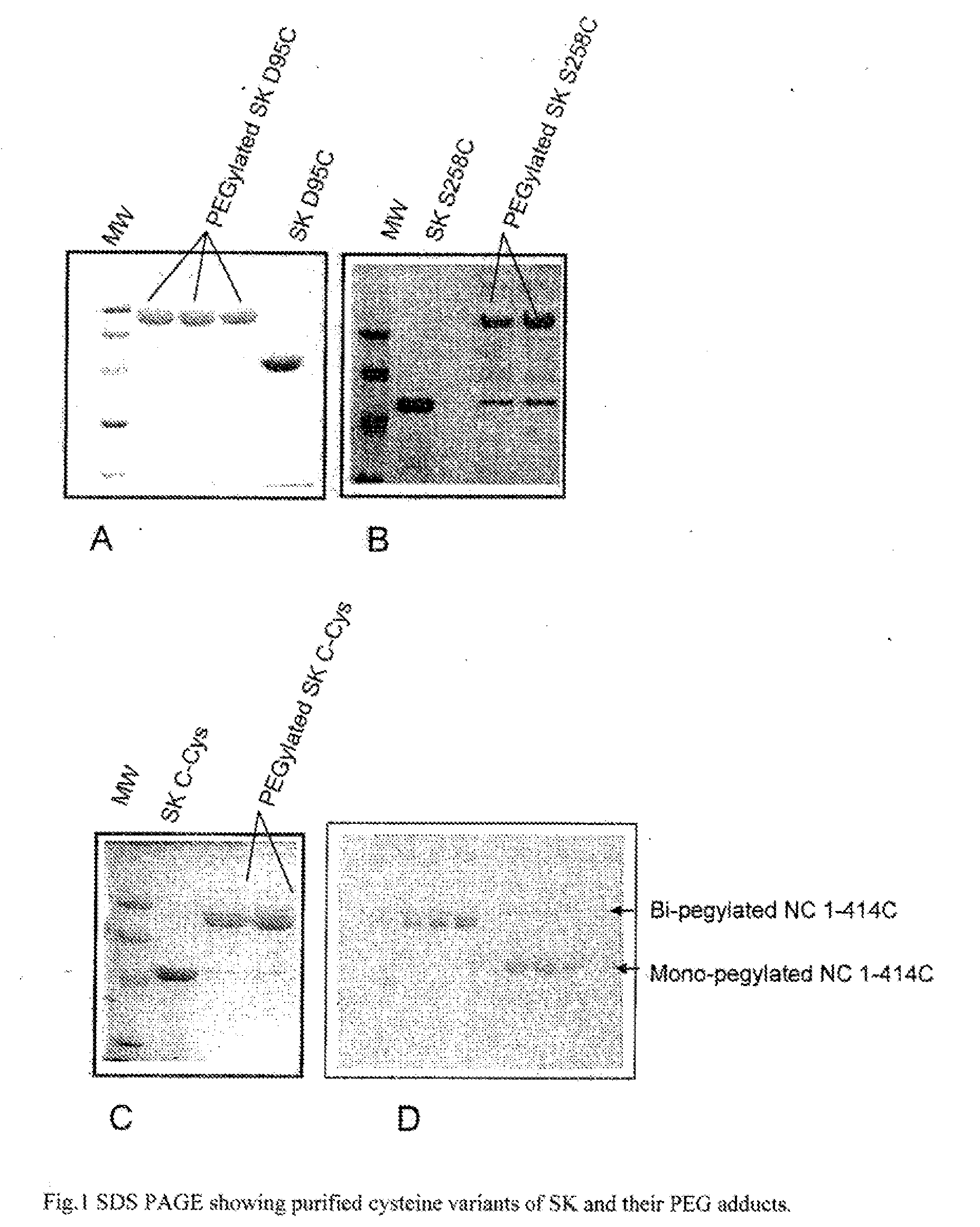Mutants of streptokinase and their covalently modified forms
a technology of streptokinase and covalent modification, which is applied in the direction of peptides, drug compositions, cardiovascular disorders, etc., can solve the problems of vascular blockage, death conditions, and slightly more likely to cause stroke, so as to prolong the half-life of plasma elimination, reduce immunogenicity, and increase proteolytic stability
- Summary
- Abstract
- Description
- Claims
- Application Information
AI Technical Summary
Benefits of technology
Problems solved by technology
Method used
Image
Examples
example 1
Selection of Residues or the Regions of Protein for Generating Cysteine Variants of Streptokinase
[0109]Residue selection for substitution or deletion is crucial to maintain the functionality of modified polypeptides. Therefore, cysteine mutagenesis plan requires both structural information present in crystal structure and the functional insights obtained through solution studies. Extensive structure and function studies over the years has gathered tomes of information about the role of different regions of streptokinase in plasminogen activation. To decide upon the residues or the region where the naturally present amino-acid can be preferably substituted with the cysteine, we utilized information present in three dimensional structure of SK or its isolated domain along with their functional relevance. The selection of residues for cysteine mutagenesis was partly based on the determination of the surface accessibility of the residues. Site of cysteine insertion was also limited to f...
example 2
Genetic Construction of Cysteine Variants of Streptokinases
[0111]All the genetic constructs to express streptokinases were generally constructed by using conventional approaches known in the art. The methods of DNA manipulation to incorporate mutations are described, for example, in ‘PCR Protocols: A Guide to Methods and Applications’, edited by Innis, M. A. et al. 1990., Academic Press Inc., San Diego, Calif. and ‘PCR Protocols: Current Methods and Applications’ edited by B. A. White, 1993., Humana Press, Inc., Totowa, N.J., USA. Bacterial and Yeast expression cassettes were made by inserting the DNA molecule encoding the desired streptokinases into a suitable vector (or inserting the parent template DNA into the vector and mutagenizing the sequence as desired therein), then transforming the host cells with the expression cassette using conventional methods known in the art. Specific mutations were introduced into the desired constructs using a variety of procedures such as PCR mut...
example 3
Over-Expression and Purification of Biologically Active Streptokinases
[0142]The native streptokinase protein (nSK), its mutants and their subsequent Cysteinyl mutants to be purified were each grown from single colony, streaked on LB-Amp plate from their BL21 (DE3) glycerol stocks. The primary cultures were developed by inoculating pET-23d-SK or SK variants into 10 ml of LB medium containing 100 microgram / mL ampicillin (LB-Amp medium) and incubated for 8-16 hours at 30-37 C, under shaking conditions (180-280 rpm). This pre-inoculum was used to seed 500 ml of LB-Amp medium at 2-10% v / v and allowed to grow at 30-37 C., at 180-280 rpm to an O.D600 nm (optical density measured at 600 nano-meter) of 0.5-1.0. At this stage, it was induced with IPTG (final concentration of 0.5-1.0 millimol) (Chaudhary et al., 1999; Dhar et al., 2002) and further grown at 40 C, for 6-12 hours under shaking condition. Cells were then harvested by centrifugation at 6000-7000 g for 10 min. The pellet was then w...
PUM
| Property | Measurement | Unit |
|---|---|---|
| pH | aaaaa | aaaaa |
| constant current | aaaaa | aaaaa |
| constant current | aaaaa | aaaaa |
Abstract
Description
Claims
Application Information
 Login to View More
Login to View More - R&D
- Intellectual Property
- Life Sciences
- Materials
- Tech Scout
- Unparalleled Data Quality
- Higher Quality Content
- 60% Fewer Hallucinations
Browse by: Latest US Patents, China's latest patents, Technical Efficacy Thesaurus, Application Domain, Technology Topic, Popular Technical Reports.
© 2025 PatSnap. All rights reserved.Legal|Privacy policy|Modern Slavery Act Transparency Statement|Sitemap|About US| Contact US: help@patsnap.com



